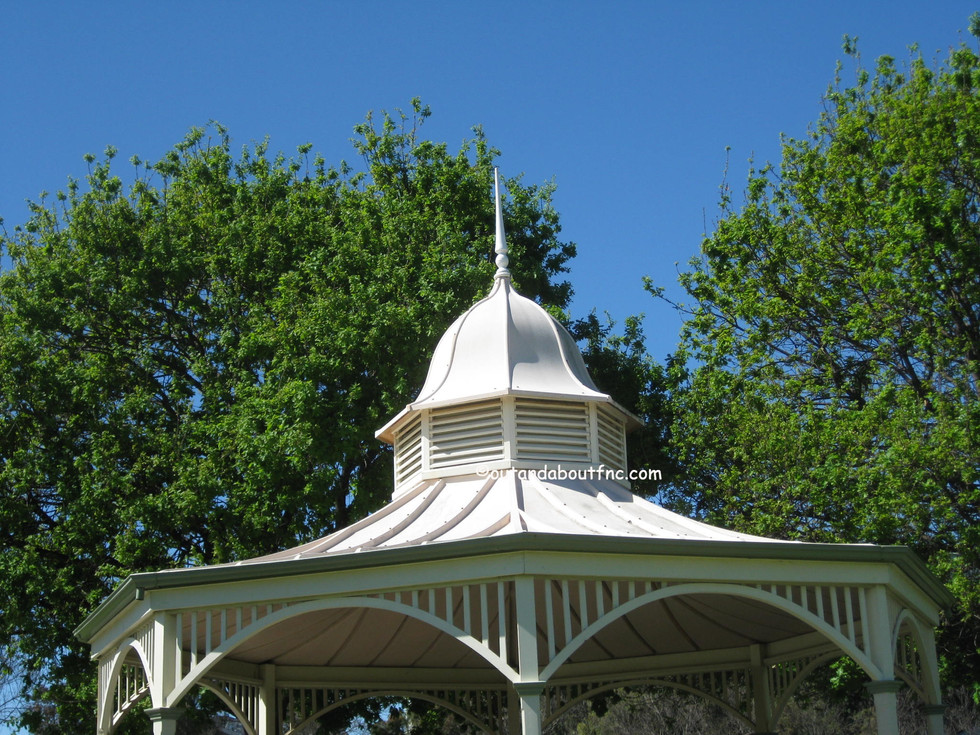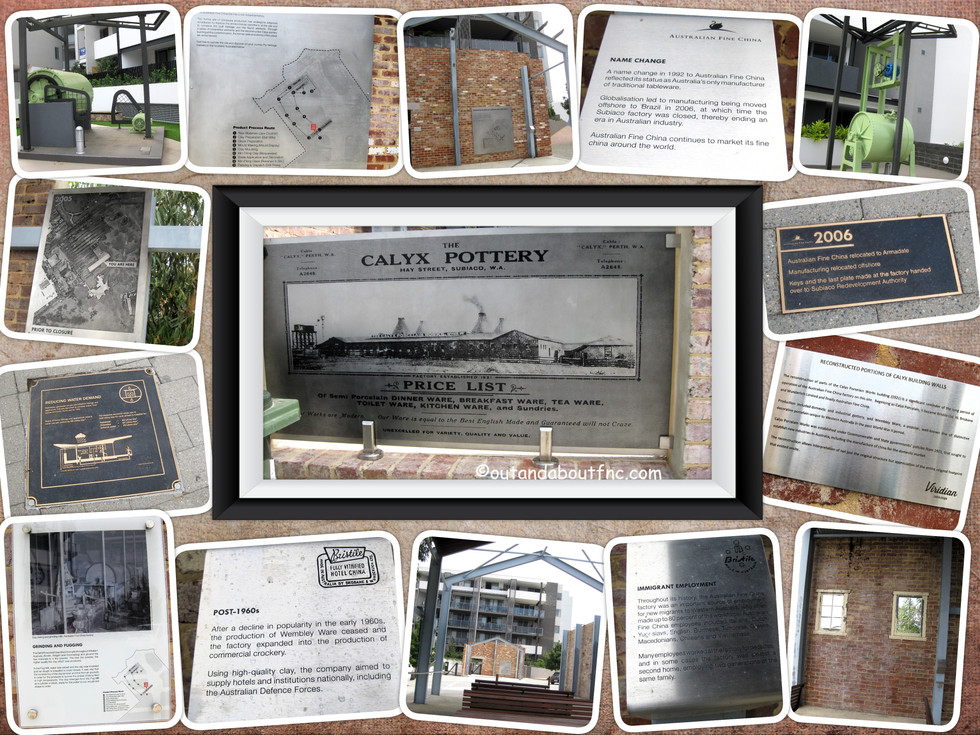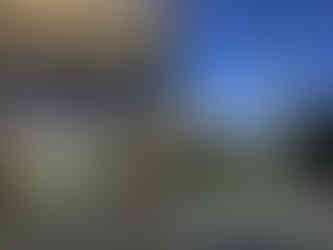Walking Subiaco - Subi Centro with Subiaco Common
- Out and About
- May 18, 2024
- 11 min read
Updated: Sep 26, 2024

This is another Walking Subiaco self guided walk exploring the redevelopment of the old industrial sites along the railway line. https://www.subiaco.wa.gov.au/subiacowebsite/media/media/Community%20Development/Self%20guided%20walks/Walking-Subiaco-Subi-Centro.pdf
The Indigenous people of the Swan River and the Swan Coastal Plains inhabited the area now known as the City of Subiaco before white settlement. They are the traditional landowners, keepers of knowledge, custodians and carers of the land and waterways. The first European residents, a group of Benedictine monks whose order was founded in Subiaco, Italy, came to this area in 1851. They established a settlement called New Subiaco north of the present boundary of the City. When the Perth to Fremantle railway opened in 1881 the station in this area was named Subiaco.
The area now known as Subi Centro is closely linked with the railway. In the 1890s, Subiaco’s population increased dramatically due to the combination of a depression in the eastern states and the gold rush in Kalgoorlie. Families clustered in tents and makeshift dwellings around water sources near the railway line. Most of this land was designated railway and local government endowment land and was eventually leased for industrial use. Significant industrial growth occurred in this area during the first half of the twentieth century followed by a gradual decline in the second. At the height of the industrial activity, railway shunting areas surrounded the station and spur lines were laid to major sites such as Humes & CIG.
In 1994 the Subiaco Redevelopment Authority was established to undertake urban renewal on the 80 hectare site now known as Subi Centro. The major infrastructure component of the project has been the sinking of the railway line through Subiaco. In 1997, the underground construction of a new railway station and 800 metres of line enabled the connection of Wembley and Subiaco and freed up land needed to create new neighbourhoods, roads and commercial and retail space.
The Subi Centro self guided walk reveals something of the area’s rich industrial and social history, as it guides walkers through a newly created urban environment. The walk begins on the ground level concourse above the Subiaco railway station – the third to be built in this vicinity. The first, surrounded by bush, required intending passengers to step forward and hail the train as it approached. The second station, sited a little further west than the present underground station, included a signal box, ticket office, platform, waiting room and Station Master’s office.
In 1998, the first train passed along the underground line. Above the new station a busy concourse links the century old Rokeby Road retail precinct with the shops and businesses of Subiaco Square. Here you will find the 'Clock Tower' by Rodney Glick, Kevin Draper and Marco Marcon. The sculpture sees two identical industrial columns tilt towards each other. One carries a clock face and the other a mirror so the reflection of one literally cancels out the other. As the clock ticks forward it's reflection ticks backwards.

Turning right as you face the station clock, proceed towards the eastern end of the concourse. Cross Brigid Road and walk along Dublin Close, passing Clare Lane as you near Market Square Park. The street names reflect the Irish origins of the Sisters of St. John of God, who nursed victims of the typhoid epidemic in this area during the late 19th century.
Turn right when you reach the cycle path near the playground and continue to bear right as the path slopes downwards along a line of two storey houses facing Market Square Park . Granted to the Municipality in 1922 as a market place, Market Square Park is a popular public open space. It incorporates a skateboard bowl, children’s playground and a rotunda, which has been used as a concert venue. Market Square Park often hosts community events such as markets. Note the sculpture by Mary Knott called Neap Tide on your left and An Gorta Mor further along where you can read up about the Great Irish Potato Famine.
Follow the row of large century old ficus trees along Roberts Road and proceed westwards. The trees were planted around 1900 by the sons of John and Elizabeth Jones, whose home stood opposite, facing Roberts Road. Built in 1886, this was the first permanent house in Subiaco within the boundaries as they stood at that time. The Station Master’s house, later used as a kindergarten, also stood in this vicinity until the late 1990s.
Continue along Roberts Road and cross the access to the station. Continue west, past the entrance to Station Street, pausing to note the quotations from poetry by Penny Bovell and Deborah Robertson, engraved in the footpath.

Look to your left across Roberts Road, noting the curved office building named after Tom Outridge, a champion Subiaco footballer and first winner of the Western Australian Football Association’s Sandover Medal in 1921. Cross over Centro Avenue and continue to follow the curve of Roberts Road towards its junction with Hay Street.
Timber stock yards used by Elders Smith occupied land near this point. Cattle and horses were moved by rail via a spur line and by truck. The sale of horses reached a peak in the 1940s and 50s, when their use on farms and in the city for the delivery of bread and milk was declining. The stockyards closed in 1956. Turn right at the intersection of Roberts Road and Hay Street and walk westwards along Hay Street.
Before redevelopment, the entries to several factories were situated close to the Hay Street subway. These included Alroh Turf Machinery and Australian Fine China, which began as Calyx Pottery in 1921. The factory was staffed by experienced potters from England. In 1941 it was leased by Brisbane and Wunderlich who later owned the business and traded as Bristile. The production of industrial porcelain goods and the supply of china to the hospital and hotel sector was augmented by a now famous line of ornamental gift china called Wembley Ware, produced from 1946 to 1961. The pedestrian underpass connecting Hay Street with Jolimont Park bears stunning murals reflecting Australian Fine China and Wembley Ware.

Spraypave, a company that developed a liquid bituminising process, was based further west along Hay Street. The company traded as Colfix in earlier days.
As you cross Mouritzen Way you will spot the first of the Spun Ring Sculptures, a yellow entrance statement to the housing development of Subi Centro. Personally I think this is a more interesting walk as it brings you to the walkway leading to Subiaco Common, passing the water feature ring, the Butterfly Ring and leading to the red Spun Ring above Subiaco Common. It also brings you past the Calyx Pottery footprint, other artworks referencing the industrial past and the timeline plaques embedded in the pavement. You can walk west along Price Street to see the white Spun Ring and the Anne Neil sculptures before re-joining the trail on Laurino Terrace.
If you continue on the official trail along Hay Street keep an eye out for the sculpture referencing the Torpedo Factory which can be glimpsed on the Hay Street side of the building set one street back on Wembley Court - we had to peek through a gap in the fencing of the current construction site. The Torpedo Factory was set up during the Second World War by the American Navy for the servicing and supply of torpedos to American, Dutch and English submarines based in Fremantle. This activity took place near the junction of Hay Street and Troy Terrace. The factory is remembered by some of the area’s older residents, although it appears that many residents were unaware of its presence during the war.
As you continue along the northern side of Hay Street you will see Lords, a large building on your right. Lords, erected in the 1960s, was used as a depot by Mayne Nickless, a transport company. In 1980 it became a centre for indoor sports, notably cricket, hence the name ‘Lords’. Since then the building has continued to house health studios and various team sports.
Lords and a block of new housing at the junction of Hay and Tighe Streets stand on the historic site of Monteath, a foundry and ironmongery, one of the earliest factories in the Subiaco industrial area. Monteath Bros & Clemenger set up an iron foundry on Cardigan Terrace, Jolimont in 1906, but in the following year moved to a triangular site at the junction of Hay Street with Tighe and Price Streets. They manufactured cast iron pipes, flushing cisterns and other steel castings until 1955.
Having turned into Tighe Street, pause at the entrance to Price Street. You will see a row of iron sculptures by Anne Neil symbolising the industrial gas industry . The northern side of the intersection of Price and Tighe streets was the site of the British Oxygen Company’s factory – a site that was originally Dobbies Foundry but later saw a long history of industrial gas production. Westralian Chemicals and the Western Oxygen Company were followed on this site by Commonwealth Industrial Gases, later renamed BOC by the parent company. Oxygen and acetylene were produced at the plant. During the redevelopment, the residue of lime, a by-product of acetylene production, was used to neutralise areas of acidic soil in Perth’s northern suburbs.

You will also find a residential wall reflecting the many tools used by industry and on the back of Lords art work by Steve Tepper.
Across Tighe Street from BOC stood Winterbottoms vehicle assembly works. This factory and other businesses on the western side of Tighe Street were demolished in 2003 to make way for the St. Ives Centro retirement complex. Several new streets were created during the redevelopment process on the eastern side of Tighe Street. Laurino Terrace and Trillo Road are named after varieties of olive trees.
Turn right into Laurino Terrace and walk eastwards. At the end of the street you will see a large bronze sculpture of a kookaburra by artist Susan Flavell. The statue stands at the eastern boundary of the Subiaco Rise development. From this high point you will enjoy a wide view over an area that was once fully occupied by heavy and light industry.
The kookaburra has two connections with the industrial history of Subiaco. It was taken as the emblem of Metters ‘Early Kooka’ gas stoves, made at the Subiaco factory in the mid 20th century. The stoves were enamelled in green and cream with a small kookaburra on the oven door. The kookaburra was also a popular item in Brisbane and Wunderlich’s Wembley Ware gift china.
Return to the intersection of Laurino Terrace and Allora Avenue, then follow Allora Avenue as it curves back towards Tighe Street. The last house on your right was the Subiaco Sustainable Demonstration Home. Now privately owned, the Subiaco Sustainable Demonstration Home was built by the City of Subiaco as a ‘solar passive’ house using natural means of temperature control and incorporating other aspects of resource conservation such as the use of ‘grey’ water for gardening.
Alternatively go down the steps from the kookaburra and veer left around the lake and along the leafy green Heather's Walk.
Turn right into Tighe Street. Pass the entrance to Upham Street and then turn right into Mere View Way – mere being an old English word for lake. On your right is The Watershed, fabricated using recycled materials from the former Humes site nearby. It is a public artwork by Rodney Glick and Kevin Draper symbolising the area’s industrial history and using the natural beauty of water.

While wandering around the Watershed we glimpsed a sculpture to the east so we headed along the walkway to Greenwood Lane and then turned left coming to Mercator Lane and Cartography Lane which feature a central green strip with giant artworks by Peter McMeikan featuring a drafting pen and a compass at either end and a lovely arbor decorated with cut outs of trade tools and equipment, reflecting the technical equipment used at the Wembley Technical College which was located here. These artworks were installed in 2023 and do not feature on the Subi Centro walk trail but can easily be added on as a detour.
From Mere View Way, turn left into Cobble Way, then right into Coral Tree Avenue where the trees bear red flowers in early spring. This area of housing is on the former site of Subiaco’s largest industrial enterprise, Humes concrete and steel works. In the early twentieth century a horse-drawn tramway operated in this vicinity, providing transport between Subiaco and the lime kilns to the north-west, beyond Perry Lakes. The Western Australian branch of Humes opened in the 1920s, eventually employing a staff of hundreds. Concrete and steel pipes were produced in huge quantities by the workers at this factory, supplying piping for the North West Shelf gas and other projects. The company also cast in concrete the Vlamingh memorial sculpture on the coastline north of Fremantle.
The steel and concrete divisions separated when the factory closed down in the 1990s. The concrete division moved to Welshpool and the steel division to Kwinana. The Lab, an arts centre providing studio and performance space for the visual and performing arts, occupied the former Humes factory on Salvado Road from October 1992 until May 1996.
Follow the curve of Coral Tree Avenue to your right until you come to Jasmine Avenue and Old Jacaranda Way. Looking eastwards from the centre of Jasmine Avenue you will see the distant spire of St. Joseph’s Church. Turn right and walk southwards along Old Jacaranda Way – so named because mature jacaranda trees were transplanted from suburban gardens to this street. Lemon trees also bloom and bear fruit along the verges. At the southern end of Old Jacaranda Way, cross the street and descend the steps or ramp to Subiaco Common.


Turn left and follow the edge of the lake in an easterly direction. A lake fed by a stream forms the focal point of Subiaco Common. In the industrial years railway spur lines to Humes and CIG crossed this area. There is a lovely nature playground tucked under the shady trees.

If you haven't explored the three spun rings sculptures head up the steps or use the accessible walkways. The red spun ring overlooks Subiaco Common and you can wander on to see the white and yellow rings which were also visible earlier on in the walk. This is also the location of the Butterfly Ring, another Stuart Green creation. This ring, covered in little butterflies, pays homage to the porcelain and china giftware and household fixtures once produced at this site. On your way you will find the Calyx Pottery footprint.
As you approach the end of the park under the magnificent tree canopy you will see the slide which provides a fun way to access the park from Flood Street.
Take the nearby steps or ramp to Juniper Bank Way and walk through the park aiming for the north eastern corner.

Cross Harborne Street. Metters foundry and ironworks was located in the triangular site between Salvado Road, Harborne Street and Roydhouse Street, now home to Bunnings and various other retailers. Metters moved to Subiaco from the West Perth industrial area in 1911. The factory eventually became a very large complex, with two blast furnaces and in later years, a modern enamelling plant. The factory produced a remarkable variety of metal goods including domestic and industrial stoves, windmills and grave railings such as those seen in the East Perth pioneers cemetery. Metters were second only to Humes in terms of size and numbers employed. The factory closed down and was demolished in 1986.
Turn south into Centro Avenue, former site of the Arcus company which was set up in Subiaco in 1923, specialising in metal work and by the mid-20th century, household white goods. An early contract was the production of the copper cone for the top of the Subiaco Fallen Soldiers Memorial clock, built in 1923 on the corner of Rokeby and Hamersley Roads.

Proceed along Centro Avenue then turn left into Hood Street. Continue to the T junction with Station Street. Turn left, cross Station Street and walk northwards for a short distance to Wexford Street. This is the former site of the State Government Printing Office. which moved to a new building facing Station Street Subiaco in 1952 until it was taken over by the private sector and relocated in the 1990s. In 1976 the nearby Marist Brothers College was acquired and converted to provide administrative space for the Printing Office before becoming the Wembley College of TAFE and a portion of the factory site was redeveloped for housing.

Return southwards along Station Street, keeping an eye out for the Urban Classics statues outside Healthway, before taking Subiaco Square Road and enjoying the many shops, cafes and restaurants around Subiaco Station to mark the end of your walk.


This self guided walk is approximately 3.5km long an will take 1-2 hours. It is a lovely walk through a very picturesque residential development even if you are not interested in the historical context. Parking is available at the retail precinct at Station Square, where you will also find toilets, or this walk can easily be accessed by travelling by train to Subiaco Station.
To read more blogs go to:
For other walks in and around Subiaco view:
I love wandering along trails, both marked and unmarked, and sharing my discoveries with my Out and About FNC community. If you enjoy reading my blogs please consider a small donation which will be used towards the costs of keeping the website up to date and relevant.
In the spirit of reconciliation Out and About- Family Nature Connection acknowledges the traditional owners of the Wadjak boodjar (Perth land) and their connections to land, sea and community. We pay our respect to their elders past and present and emerging and extend that respect to all Aboriginal and Torres Strait Islander peoples today.






































































Comments